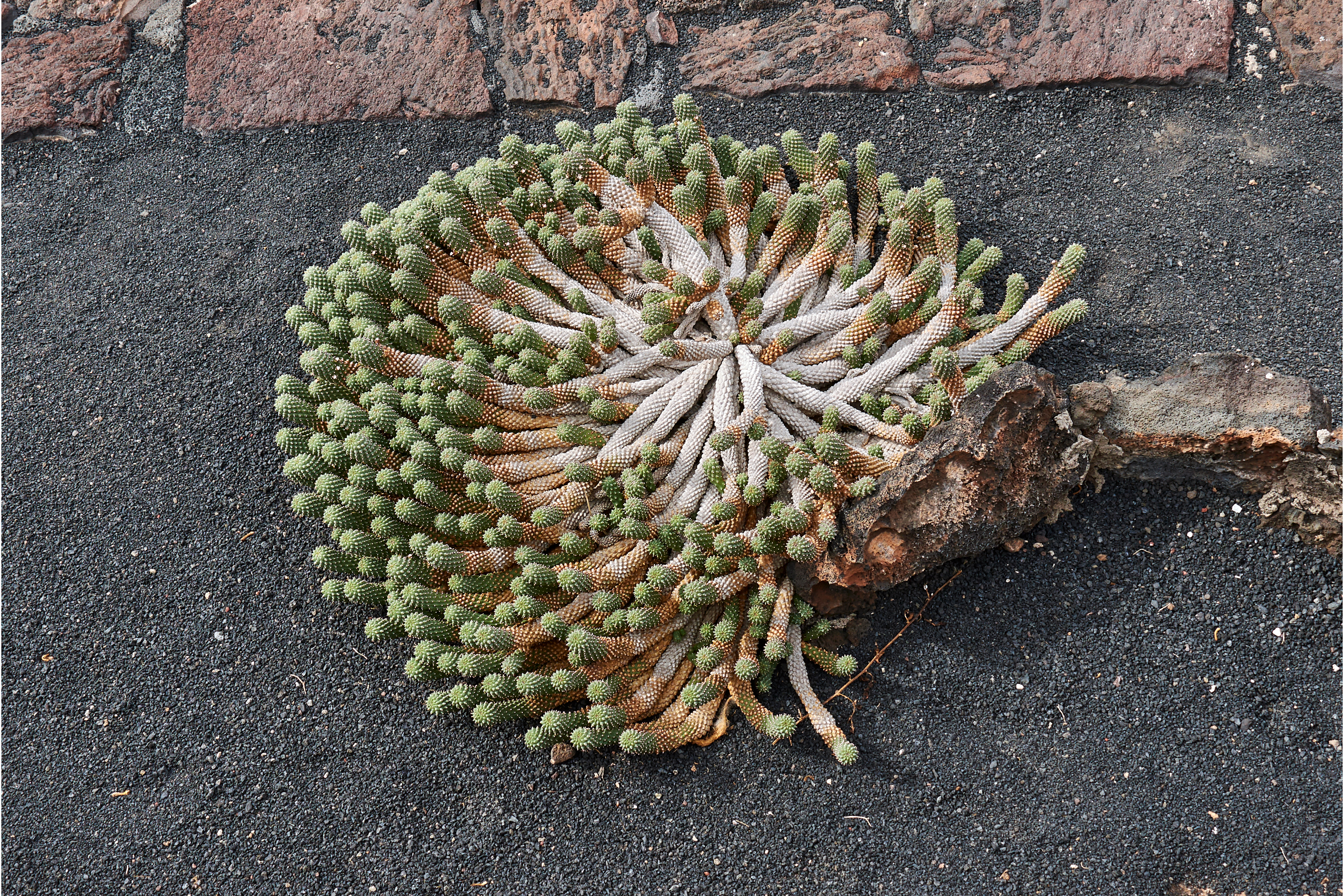Transkei medusa's head
(Euphorbia flanaganii)

Description
Euphorbia flanaganii, commonly known as Transkei medusa's head, is a succulent plant that belongs to the family Euphorbiaceae. Due to the breadth of the Euphorbiaceae, little research specific to E. flanaganii has been conducted. It is believed to be closely related to E. hypogaea and E. procumbens, resulting from a common speciation event. However, the phylogenetic association between the three species remains relatively unreliable, with values of only 53/.66 attributed to the linkage. Euphorbia flanaganii is in subgenus Athymalus, which comprises 150 species. It is an agglomerated, thorny, succulent plant with snake-like branches that has a swollen underground stem. It is a dwarf shrub with a size of 0.02 to 0.05 m in height that is found at an altitude of 30 to 185 meters. Leaves are rather small, only 10 mm long and 1 mm broad. Its branches grow horizontally, up to 400 mm in diameter. It has inflorescence in cyathium with a single, 4 mm long flower per flower stalk that bloom in late summer and autumn. It has photosynthetic modified stems that lack, or have delayed development of, periderm. Careful observation of E. flanaganii specimens also reveals modified, needle-like leaves, radial geometric symmetry, and a seemingly tuberous above ground root structure. Given the present body of knowledge that pertains to other Euphorbia species found in the same regions as E. flanaganii, and historical evolutionary events, it is highly likely that E. flanaganii is roughly 3–10 million years old as well. The common name "spurge" derives from the Middle English/Old French espurge ("to purge"), due to the use of the plant's sap as a purgative. The botanical name Euphorbia derives from Euphorbos, the Greek physician of King Juba II of Numidia (52–50 BC – 23 AD), who married the daughter of Anthony and Cleopatra. Juba was a prolific writer on various subjects, including natural history. Euphorbos wrote that one of the cactus-like euphorbias (now called Euphorbia obtusifolia ssp. regis-jubae) was used as a powerful laxative. In 12 BC, Juba named this plant after his physician Euphorbos, as Augustus Caesar had dedicated a statue to the brother of Euphorbos, Antonius Musa, who was the personal physician of Augustus. In 1753, botanist and taxonomist Carl Linnaeus assigned the name Euphorbia to the entire genus in the physician's honor.
Taxonomic tree:







